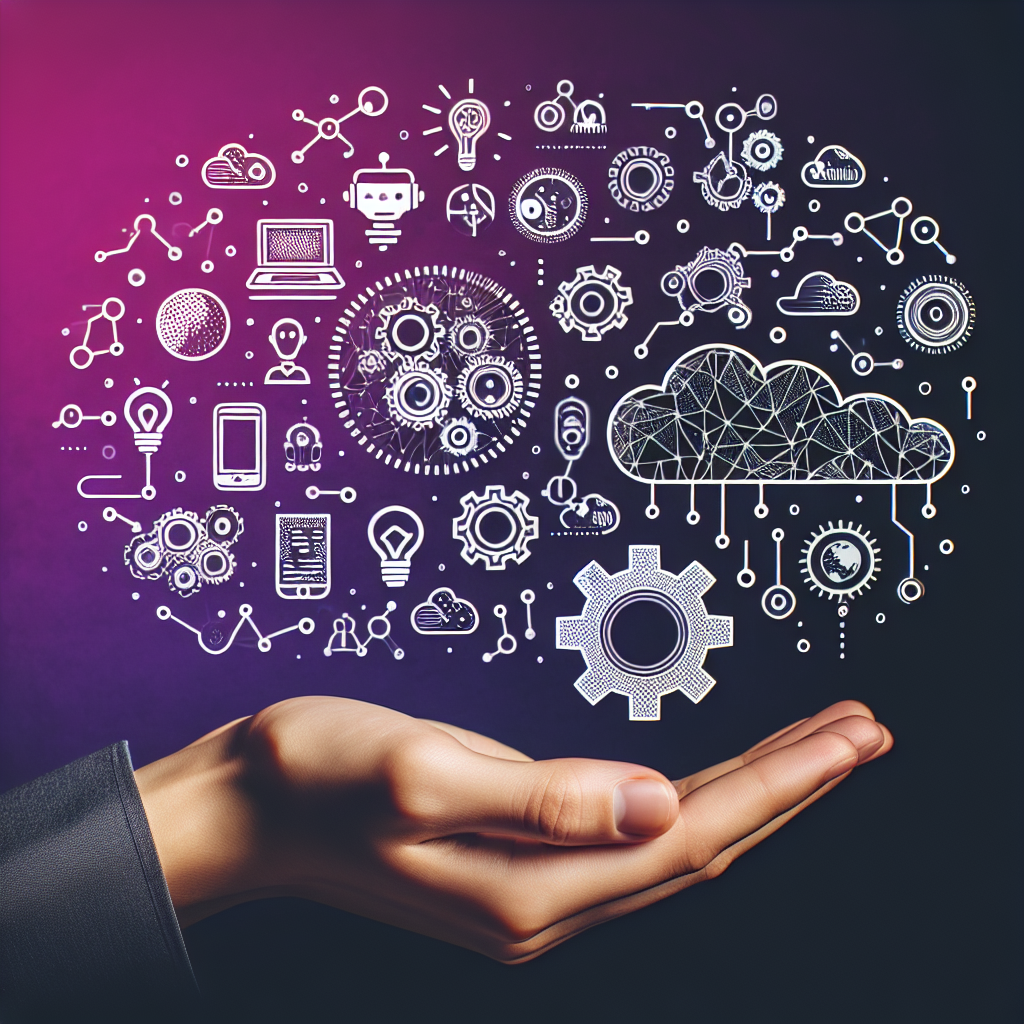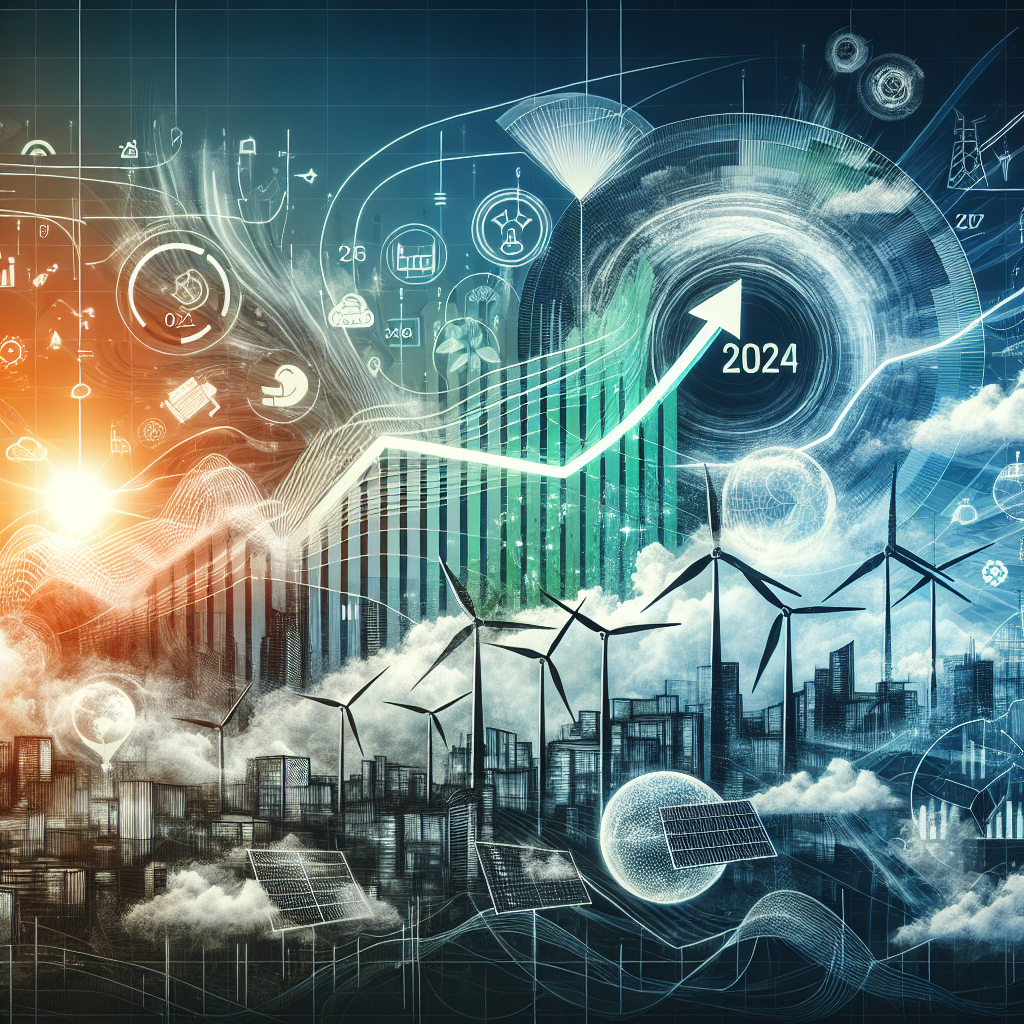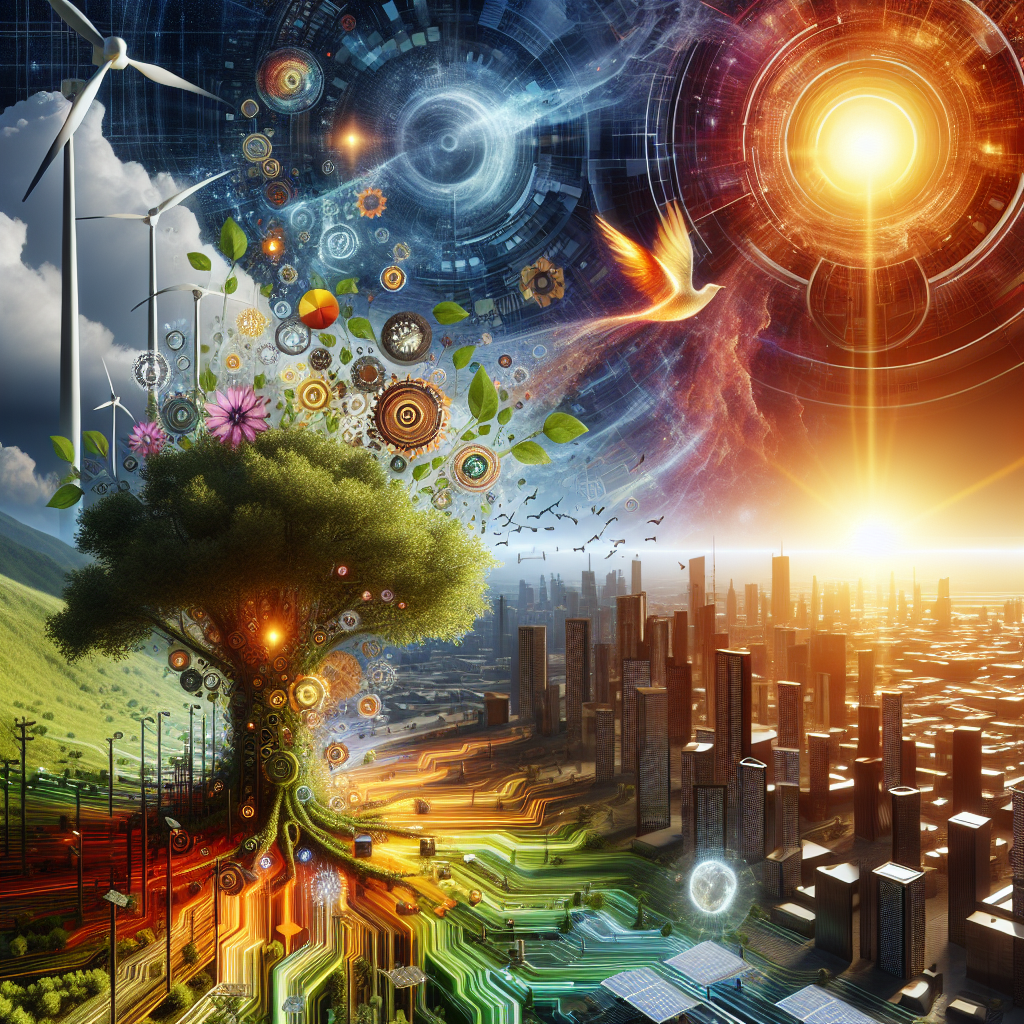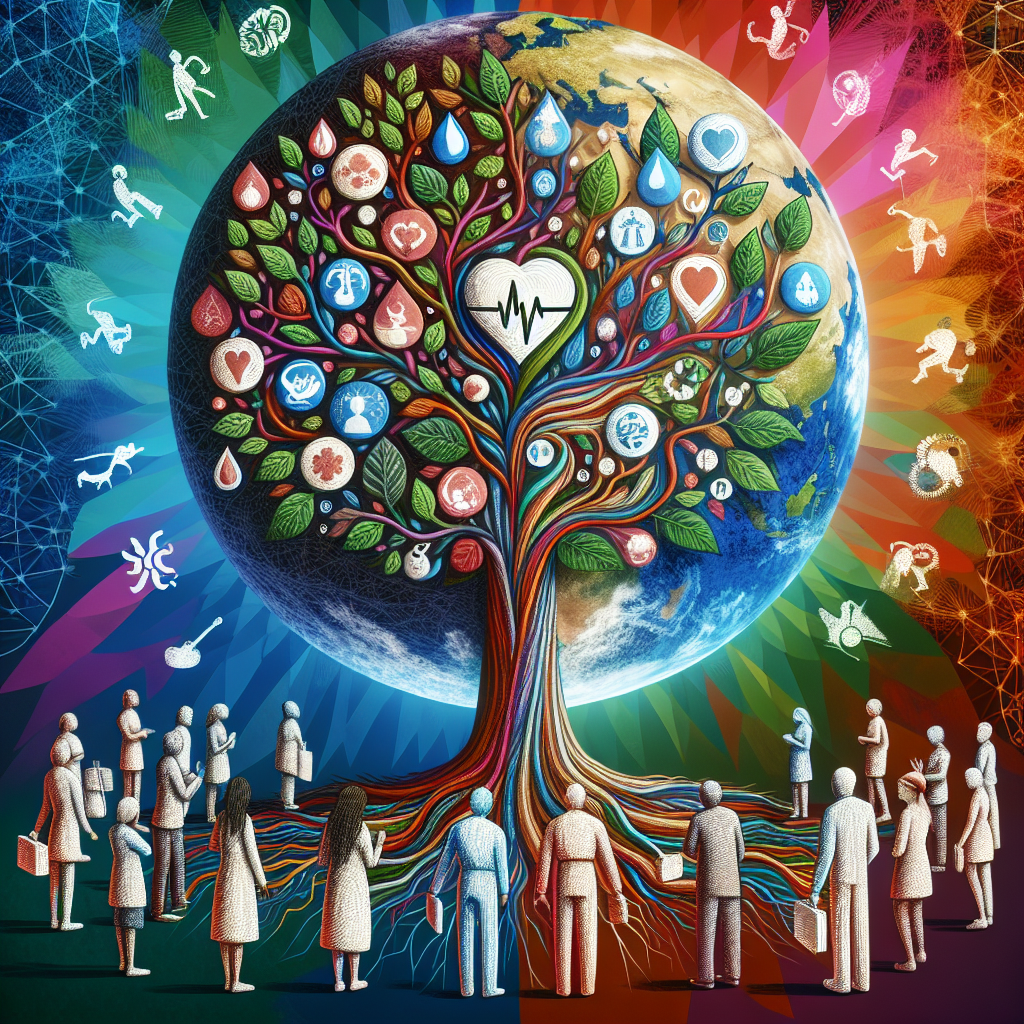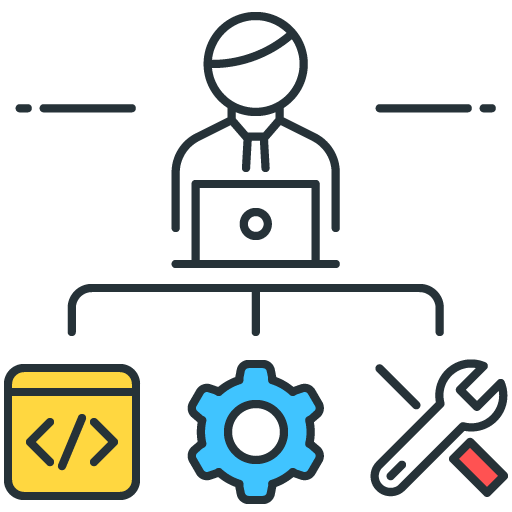
Start thinking more like an analyst.
Learn data science, natural language processing, and big data analysis essentials at your own pace.
Redefining the Future of Business – How Intelligent Automation is Reshaping Success
Transforming Business in the Age of Smarter Automation
In the rapidly evolving landscape of digital transformation, intelligent automation is taking center stage. It’s no longer about improving efficiency or cutting costs through simple task automation. The next evolution in automation involves combining artificial intelligence (AI), robotic process automation (RPA), and advanced analytics to create businesses that are fundamentally smarter and more adaptable. This convergence is enabling organizations to streamline their operations, optimize decision-making, and remain agile in the face of constant change.
As intelligent automation continues to mature, three transformative trends are reshaping the future of business: hyperautomation, autonomous business operations, and the AI-augmented workforce. These trends go beyond just improving day-to-day operations—they’re about completely rethinking how businesses operate and thrive in an increasingly complex world.
Hyperautomation: The Evolution of Business Intelligence
Hyperautomation is not just another buzzword. It represents a profound shift in how businesses approach automation. While traditional automation focused on eliminating manual, repetitive tasks, hyperautomation extends this idea to the entire business process. Imagine a seamless, interconnected system where AI, RPA, and analytics work together in perfect harmony across all departments, from finance to customer service to logistics.
This unified approach allows organizations to automate even the most complex processes—linking them in ways that create a continuous flow of work and eliminate bottlenecks that can slow down decision-making. The benefit here isn’t just the ability to handle more tasks faster, it’s the potential to gain insights and make data-driven decisions in real-time. In industries like finance, healthcare, and retail, hyperautomation is already driving massive changes. It’s allowing businesses to stay ahead of the competition by creating smarter, faster, and more efficient systems.
But hyperautomation is not only about increasing efficiency—it’s also about creating a culture of innovation. By automating routine tasks, employees are freed up to focus on creative and strategic initiatives, driving forward-thinking projects that help the business grow. With hyperautomation in place, organizations can scale more quickly and adapt to market shifts, positioning themselves as leaders in their industries.
Autonomous Business Operations: AI as a Decision-Maker
One of the most exciting prospects in intelligent automation is the rise of autonomous business operations. Here, AI takes on the role of decision-maker, making key business choices without human intervention. While this may sound like science fiction, it’s becoming a reality for companies that have embraced AI-driven systems.
In an autonomous organization, AI algorithms not only execute tasks but also interpret data and make strategic decisions that were once the domain of human managers. From supply chain optimization to risk management, AI is now capable of identifying patterns, predicting future trends, and recommending actions in real-time. This shift means that businesses can run more efficiently, with AI ensuring that operations are continuously optimized based on real-time data.
The benefits of autonomous business operations are vast. They create a system where businesses can operate 24/7, responding to changing conditions with a level of speed and accuracy that humans simply can’t match. In industries like manufacturing, energy, and telecommunications, autonomous operations are streamlining processes, reducing errors, and improving overall business performance.
However, what makes autonomous business operations truly remarkable is their ability to learn and evolve over time. As AI systems interact with new data and scenarios, they continuously refine their decision-making processes, becoming even more effective at solving problems and identifying opportunities.
The AI-Augmented Workforce: Humans and Machines Working Together
In the era of intelligent automation, it’s essential to remember that AI is not here to replace humans. Rather, it’s here to augment human potential. The concept of an AI-augmented workforce is one where AI and humans collaborate seamlessly, leveraging each other’s strengths. AI can automate routine tasks, analyze vast amounts of data, and provide insights in real-time, while humans bring their creativity, empathy, and problem-solving skills to the table.
This collaboration between humans and machines leads to a more productive and innovative workforce. Employees are freed from mundane tasks, allowing them to focus on high-value activities such as strategic planning, customer engagement, and creative problem-solving. AI’s ability to process data quickly and make recommendations can help employees make better decisions faster, enhancing their ability to contribute meaningfully to the organization.
The synergy between human workers and AI is already transforming various sectors. For example, in customer service, AI-powered chatbots can handle routine inquiries, enabling human agents to tackle more complex issues. In marketing, AI can analyze customer behavior and optimize campaigns, allowing marketing teams to personalize their strategies and improve customer satisfaction. Similarly, in human resources, AI is streamlining recruitment processes, helping businesses identify the best candidates faster and more accurately.
Rather than seeing AI as a threat, businesses must embrace the idea of an AI-augmented workforce—one where human ingenuity and AI-powered intelligence combine to drive success.
Adaptive Organizations: Embracing Change and Innovation
The ultimate goal of intelligent automation is the creation of adaptive organizations. These are businesses that can continuously learn, grow, and evolve in response to changing market dynamics. By leveraging AI, data, and automation, adaptive organizations can quickly pivot, innovate, and remain competitive—no matter the challenges they face.
At the heart of an adaptive organization is a data-driven culture. Decisions are made based on real-time insights, not outdated assumptions. AI systems are constantly analyzing new data, allowing organizations to anticipate challenges before they arise and take proactive measures to address them. This ability to predict and respond to change is what makes adaptive organizations so resilient and forward-thinking.
In addition, the collaboration between humans and AI is integral to this transformation. Rather than relying solely on historical data or traditional decision-making methods, adaptive organizations use AI to stay ahead of the curve, ensuring that their operations, strategies, and business models evolve with the times.
The Power of Intelligent Automation
The future of intelligent automation goes far beyond simple efficiency improvements. It’s about fundamentally transforming the way businesses operate. As organizations adopt hyperautomation, embrace autonomous business operations, and foster an AI-augmented workforce, they will be better equipped to thrive in an increasingly complex and fast-moving world.
For businesses that want to stay competitive in the digital age, intelligent automation is not just a trend—it’s an essential strategy for growth and success. Organizations that act now will position themselves as leaders of tomorrow, capable of harnessing the full power of automation to drive innovation, increase efficiency, and adapt to the future.
The future is clear: businesses that embrace intelligent automation will lead the way in the age of smarter, more adaptive organizations. Is your business ready to take the next step?
Is your organization ready to harness the power of intelligent automation and lead the way into the future? Learn more www.science4data.com
Surging Demand, Rising Emissions and the Complex Transition to Clean Power in 2024
In 2024, the International Energy Agency (IEA) reported a surge in electricity demand due to rising temperatures. Unfortunately, this demand was not fully met by clean energy sources. This was despite the significant addition of renewable and nuclear energy to the grid. Coal and fossil gas power still continued to cover the remaining growth in electricity generation, underscoring the ongoing reliance on these non-renewable sources.
The surge in electricity demand was partly due to the increased use of cooling technologies, particularly in China and India. These countries contributed significantly to the rise in electricity consumption. However, despite the rapid adoption of clean technologies in these and other regions, there was an increase in gas and coal use in 2024. This led to a 0.8% rise in global carbon dioxide emissions, highlighting the challenges of transitioning to a carbon-neutral future.
Interestingly, global energy demand increased faster than average in 2024. Renewables and natural gas met most of the additional energy needs, signaling some progress in the shift towards cleaner energy sources. Despite the increase in global electricity consumption, CO2 emissions started to decouple from economic growth. This was primarily due to the rapid adoption of clean energy technologies, which are more efficient and emit less carbon dioxide than traditional energy sources.
However, 2024 was also marked by a significant energy crisis. This was largely driven by the rise of data centers, AI algorithms, and developing countries’ energy consumption. The transition to electric vehicles also added to the increased demand for electricity. These developments underscore the complexity and multifaceted nature of the global energy landscape.
In a somewhat paradoxical development, despite the shift from fossil fuels, the demand for oil, coal, and natural gas rose in 2024. This was largely due to the growth of heavy industries and extreme heatwaves, especially in China and India. These countries, with their rapidly growing economies and populations, are particularly vulnerable to the impacts of climate change.
The developments in 2024 underscored the complexity of the energy challenge. While progress was made in the adoption of clean technologies, the continued reliance on coal and natural gas, and the surge in energy demand, highlighted the scale of the challenge that lies ahead. The transition to a sustainable energy future is clearly a complex undertaking, requiring concerted efforts from all stakeholders in the global community.
Science4Data is committed to cut through greenwashing and measure real impact. Join the journey to a sustainable future. Your actions matter.
The Maple Syrup Industry’s Response to Climate Change
Climate change is a global concern, affecting various sectors of the economy, including agriculture, fishing, and even the sweet world of maple syrup production. Recent shifts in weather patterns have led to warmer weather, which is causing sap to flow and boil earlier in the season. This is having a notable impact on the maple syrup industry, posing challenges but also sparking innovation.
One of the most significant effects of climate change on this industry is the shifting prime habitat range for sugar maples. Traditionally, regions such as Maine have thrived due to their abundant maple trees. However, the increasing temperatures are causing these trees to suffer stress, with their ideal habitat gradually moving northwards. This is a significant issue for producers who have historically relied on maple-rich regions for their syrup production.
However, the maple syrup industry is not taking this lying down. Producers are leveraging technology to adapt to the changing climate. Some of the strategies being implemented include using different tree varieties that are more tolerant to warmer temperatures and employing plastic tubing systems to capture early-flowing sap. Such innovations demonstrate the industry’s resilience and determination to maintain production despite the evolving climate.
The Canadian maple syrup industry, which is the world’s largest producer, is at the forefront of these adaptive measures. They are pioneering methods to manage the impacts of climate change, as well as other threats such as exotic insects and diseases. One such innovation includes silvicultural strategies, where forest diversification and thinning are used to boost the resilience of maple stands.
In addition to adapting existing maple stands, steps are being taken to establish new ones further north. This can be achieved by encouraging existing growth and planting new trees mixed with other deciduous species. This strategy helps to maintain the diversity and resilience of maple forests while ensuring the industry’s future.
The U.S. maple syrup industry, despite being more vulnerable to climate change, is also adapting through improved sap collection technology. This, together with the alleviation of environmental stressors and diversification of tapped tree species, has helped to keep the industry afloat.
Furthermore, the international network of scientists and managers known as ACERnet, is playing a crucial role in the battle against climate change. They are studying the relationship between maple tree sap quality and climate, providing valuable insights that will help the industry adapt to future climate conditions. The knowledge gained from this research will be invaluable in developing strategies to mitigate the effects of climate change on the maple syrup industry.
Climate change has introduced significant challenges to the maple syrup industry. However, through technological innovations, strategic adaptations, and persistent research, the industry is managing to keep the sap flowing, ensuring that we can continue to enjoy our favorite pancakes and waffles topped with this sweet delight.
Science4Data is committed to cut through greenwashing and measure real impact. Join the journey to a sustainable future. Your actions matter.
AI-Powered Insights for Business Growth – From Data to Decisions
In today’s hyper-competitive market, businesses generate and collect vast amounts of data. However, raw data alone does not translate into success. The real challenge lies in transforming this data into actionable insights that drive informed decision-making. This is where AI-powered analytics come in—leveraging advanced technology to convert complex data into strategic intelligence, enabling businesses to optimize their operations, enhance customer experiences, and stay ahead of the competition.
The AI Revolution in Business Intelligence
Traditional data analysis methods often fall short in handling the scale, speed, and complexity of modern data. AI-powered insights bridge this gap by:
- Automating Data Processing – AI sifts through massive datasets, identifying patterns and anomalies in real time.
- Enhancing Predictive Analytics – Machine learning models forecast trends, helping businesses anticipate market shifts and customer behavior.
- Optimizing Decision-Making – AI-driven insights empower leaders to make data-backed, strategic decisions faster and more accurately.
Transforming Data into Competitive Advantage
Science4Data’s AI solutions redefine how enterprises extract value from their data. Here’s how:
1️⃣ Intelligent Data Processing & Analysis
Science4Data automates the ingestion and analysis of structured and unstructured data, ensuring organizations can process diverse information sources—news, social media, financial reports, and internal documents—without manual intervention.
2️⃣ Multi-Agent AI for Real-Time Insights
By leveraging multi-agent AI systems, Science4Data provides businesses with real-time insights that dynamically adapt to market fluctuations, customer sentiment, and emerging industry trends.
3️⃣ AI-Powered Compliance & Risk Management
With regulatory requirements becoming more complex, Science4Data’s AI solutions help businesses navigate compliance challenges by automating risk audits and ensuring adherence to industry standards.
4️⃣ Advanced Visualization & Decision Support
Beyond generating insights, Science4Data delivers intuitive dashboards and visualization tools that make complex data accessible. Business leaders can quickly interpret insights and implement data-driven strategies with confidence.
Unveiling Underlying Drivers – From Visuals to Valuable Insights
From Charts to Strategic Drivers
In the world of business intelligence, reading charts is just the beginning. The real value lies in extracting the underlying data, identifying key drivers, and uncovering the forces that shape insights. AI-powered analytics take this process further, ensuring businesses don’t just see the data—they understand the why behind it.
1️⃣ Deep Data Extraction
Advanced AI goes beyond surface-level chart interpretation, analyzing the raw data behind visuals. This granular approach uncovers the fundamental elements that contribute to patterns and trends, offering a clearer view of business dynamics.
2️⃣ Identifying Key Drivers
By analyzing the core data, AI pinpoints the most critical factors influencing outcomes. This deeper understanding helps businesses focus on the variables that truly matter, enabling smarter, more effective decision-making.
3️⃣ Enhanced Insight Composition
With AI-driven analytics, insights aren’t just based on surface-level observations—they are rooted in data’s core drivers. This ensures that business strategies are not only well-informed but also highly actionable, turning data into a true competitive advantage.
Applications of Underlying Data Extraction
- Financial Services: In finance, understanding the underlying factors of market trends and investment performance allows for more precise risk assessments and strategic planning.
- Retail & E-Commerce: By identifying the drivers behind consumer behavior and sales trends, businesses can optimize marketing strategies and inventory management.
- Healthcare: Extracting data from medical charts helps in pinpointing the factors contributing to patient outcomes and treatment efficacy, enhancing research and care delivery
Understanding Visual Data – Elevating Insights with Chart Comprehension
In the realm of business intelligence, visual data representation through charts and graphs is a cornerstone of effective communication. However, the true power of these visuals is unlocked when AI solutions can not only display data but also interpret and understand it. Our advanced capabilities include reading and comprehending charts, transforming these insights into actionable strategies.
The Power of Chart Comprehension in AI Solutions
1️⃣ Enhanced Data Interpretation: Our AI can analyze charts and graphs to extract meaningful patterns and trends, providing a deeper understanding of the data. This capability ensures that insights are not just surface-level but are rooted in a comprehensive analysis of visual data.
2️⃣ Informed Decision-Making: By understanding the nuances of chart data we can enhance the decision-making process. Leaders can rely on AI to not only present data visually but also to interpret these visuals in the context of broader business objectives.
3️⃣ Integrating Visual Insights into Models: The ability to read and understand charts allows us to frame up predictive models with greater accuracy. This integration ensures that the insights generated are aligned with traditional BI displays, augmenting their strategic value.
Real-World Impact – AI-Powered Insights in Action
- Financial Services: AI-driven risk assessment helps financial institutions detect fraud, optimize investment strategies, and enhance customer experiences.
- Retail & E-Commerce: Predictive analytics enable businesses to personalize marketing, optimize inventory, and anticipate consumer demand.
- Healthcare: AI assists in patient data analysis, medical research, and early disease detection, improving both outcomes and operational efficiency.
- Sustainability & ESG: Businesses leverage AI to track sustainability metrics, monitor environmental impact, and enhance ESG compliance.
The Competitive Edge – Why AI-Powered Insights Matter
Companies that harness AI for business intelligence gain a significant advantage:
- Faster, Data-Driven Decisions – AI accelerates strategic planning by delivering real-time, actionable insights.
- Improved Efficiency – Automating data analysis reduces costs, enhances accuracy, and frees up human resources for higher-value tasks.
- Greater Innovation – AI unlocks new opportunities by revealing patterns and trends that might go unnoticed with traditional methods.
- Scalability – AI adapts to business growth, handling larger datasets and increasingly complex challenges with ease.
In a world where data is the new currency, businesses must harness AI-powered insights to stay competitive. Advanced AI solutions transform raw data into strategic intelligence, driving growth, efficiency, and innovation. Organizations that embrace AI-driven analytics gain a powerful edge—making smarter decisions, optimizing operations, and unlocking new opportunities
Businesses need more than just charts—they need deep, precise insights extracted from underlying data. AI-powered analytics not only interpret visual representations but also analyze the core data, revealing critical trends and actionable intelligence. This ensures every data visualization becomes a powerful tool for understanding the key drivers of business success.
Are you ready to turn data into decisions that fuel success? Explore how AI-powered insights can revolutionize your business intelligence today! Contact us today
The Symbiosis of Technology and Sustainability – Google’s Pioneering Role
In today’s rapidly evolving world, the intersection of technology and sustainability has become more pronounced than ever. At the forefront of this convergence is Google, a company that has consistently leveraged its innovative capabilities to make a significant environmental impact. This narrative explores Google’s journey in sustainability, highlighting its historical commitment, current initiatives, and future aspirations.
From its inception over 25 years ago, Google has embedded sustainability into its core values. This commitment is not merely a corporate responsibility but a foundational element of its operational ethos. Google’s early investments in renewable energy and sustainable infrastructure set a precedent for the tech industry, showcasing a long-term dedication to environmental stewardship. The company’s historical commitment has paved the way for its current and future sustainability initiatives, demonstrating a consistent and evolving approach to environmental responsibility.
Google’s role in environmental innovation is multifaceted. The company has harnessed the power of data analytics, artificial intelligence, and machine learning to create solutions that enhance operational efficiency while reducing carbon footprints. These technological advancements have enabled Google to develop tools that monitor and manage energy consumption, optimize resource use, and promote sustainable practices across various sectors. By doing so, Google not only improves its own sustainability but also sets a benchmark for others to follow.
Central to Google’s sustainability efforts are its climate action initiatives. Since achieving carbon neutrality in 2007, Google has been a leader in renewable energy procurement, matching its global electricity consumption with renewable energy purchases since 2017. These initiatives are part of a broader strategy to combat climate change and inspire other organizations to adopt similar practices. Google’s proactive approach to sustainability exemplifies how technology can be a powerful ally in addressing environmental challenges.
The relationship between technology and sustainability is increasingly symbiotic, with advancements in one field driving progress in the other. Google’s efforts highlight this interconnection, as the company leverages cutting-edge technology to tackle environmental issues. By developing tools that facilitate energy efficiency, resource management, and environmental monitoring, Google demonstrates the potential of technology to drive meaningful change in the pursuit of sustainability.
Looking to the future, Google remains committed to evolving its sustainability program. The company’s ambitious goal to operate on carbon-free energy 24/7 by 2030 underscores its dedication to a sustainable future. This aspiration reflects Google’s continuous innovation and adaptation, setting a benchmark for sustainable practices in the tech industry and beyond. By expanding its sustainability initiatives to encompass more aspects of its operations and influence, Google is poised to lead the way in creating a more sustainable world.
Google’s journey in sustainability is a powerful narrative of how technology can be harnessed to address environmental challenges. Through its historical dedication, ongoing initiatives, and future plans, Google not only reduces its own environmental impact but also inspires others to adopt sustainable practices. As technology and sustainability continue to converge, Google’s efforts highlight the potential for innovation to drive meaningful change in the quest for a sustainable future.
Science4Data is committed to cut through greenwashing and measure real impact. Join the journey to a sustainable future. Your actions matter.
Growing Awareness among Americans on the Health Impacts of Climate Change
Over the past decade, there has been a significant increase in the awareness of Americans about the impact of climate change on health. This is according to a recent survey conducted by the Yale Program on Climate Change Communication and George Mason University’s Center for Climate Change Communication. The study has brought to light some interesting and encouraging results.
The survey revealed that Americans have developed a higher trust level towards physicians, climate scientists, federal agencies, local public health departments, and the World Health Organization as sources of information about the health harms of global warming. It is noteworthy to mention that these sources of information have faced threats due to actions taken by the Trump administration, such as budget cuts for the Environmental Protection Agency and the removal of climate and health information from government websites.
In a significant shift from previous surveys, 39% of Americans now believe that global warming is causing harm to health, either “a great deal” or “a moderate amount”. The survey also showed that nearly half of Americans understand that the health harms resulting from the climate crisis affect Americans unequally.
Interestingly, despite a decrease in overall trust in health professionals following the COVID-19 pandemic, the survey found an increased trust in scientists and researchers regarding the health impacts of global warming. This is an encouraging sign that the importance of scientific research in addressing global issues is being recognized.
Also, the survey found that 37% of Americans can now identify at least one specific health harm resulting from climate change. This is a 5% increase from 2014 and highlights the growing public awareness of the health risks associated with climate change.
Certain health risks from climate change, such as heat stress, malnutrition, malaria, and diarrhea, disproportionately affect vulnerable communities. The World Health Organization has estimated an additional 250,000 annual deaths worldwide from these causes between 2030 and 2050.
Lastly, the survey reflected an increased understanding among Americans that coal and natural gas harm people’s health. However, it also found that some Americans incorrectly believe that wind and solar energy are harmful to health. This underscores the importance of continued public education about renewable energy sources and their benefits for both health and the environment.
Science4Data is committed to cut through greenwashing and measure real impact. Join the journey to a sustainable future. Your actions matter.


